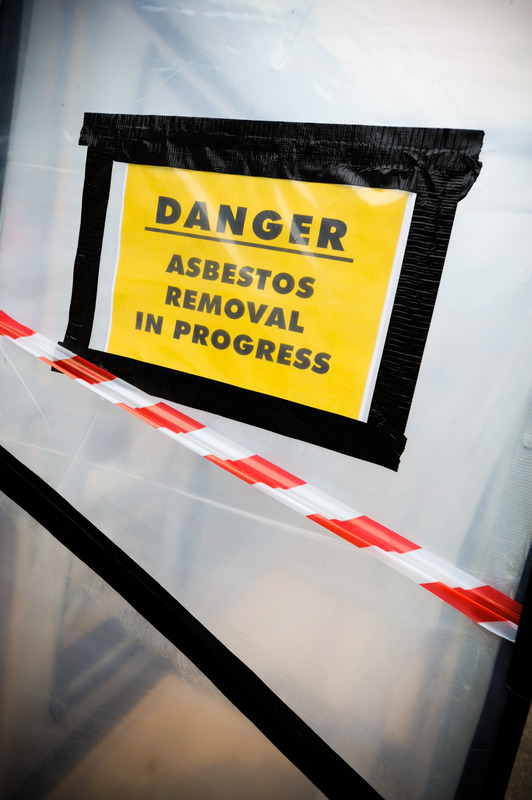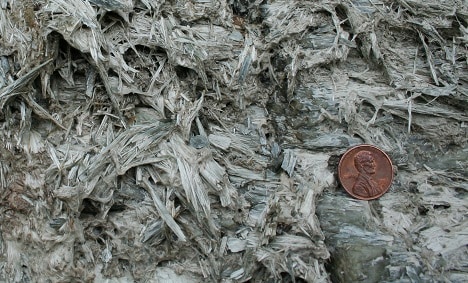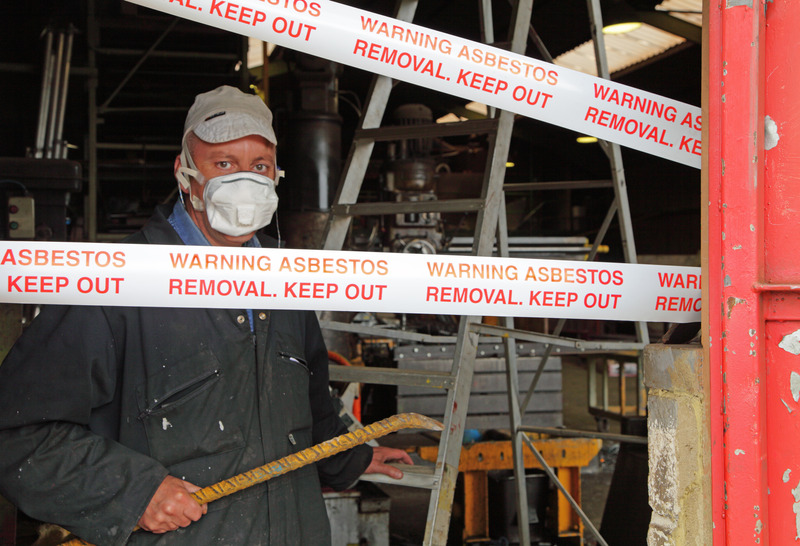Introduction to Asbestos
Dangers Of Asbestos – Like most other industrialized nations, Australia utilized asbestos widely in its own building sector for decades.
An estimated 98 per cent of Australian houses built before 1971 comprise asbestos solutions.
Australia enacted a nationwide asbestos ban in December 2003. However, the mineral remains widespread in the nation’s infrastructure.
Sometimes, asbestos-containing goods are still finding their way to the nation from places like China.
The risks of asbestos are well known. However, the comprehension of asbestos exposure. What occurs along with the health problems related to it is still missing.
Approximately 90% of the asbestos used commercially on earth is chrysotile.
The fibrous mineral was economical, durable and obviously acted as an insulating and fireproofing agent.
Which makes it well suited for construction and production.
Regrettably, asbestos fibres are highly poisonous when inhaled or consumed.
What Can Exposure Do?
Exposure, particularly long-term vulnerability, may cause serious respiratory disease and cancers. Such as mesothelioma and asbestosis.
Crocidolite asbestos, among the most toxic of the six forms. This was mined in Western Australia in the 1930s before 1966.
Using crocidolite was prohibited in 1967. Chrysotile was mined by the Woodsreef mine in New South Wales before 1980s.
However, using chrysotiles in Australia would last through 2003.
Asbestos Threat – Dangers Of Asbestos
Mine employees were one of the maximum threat for occupational asbestos exposure. Together with jobs that generated a great deal of dust out of asbestos-contaminated materials.
Many Australian residents and workers continue to be in danger today because of asbestos from residential and industrial buildings.
Present-day jobs at high risk include carpenters, electricians, metal workers and technicians.
Residents running do-it-yourself renovations in older houses are also at risk. In addition to those who live near the former asbestos mines. Or some other location where natural asbestos may be present.
Probably the most special and about a factor of asbestos is that the harmful health problems related to exposure aren’t instantaneous.
Asbestos-Related Illness – Dangers Of Asbestos
Asbestos-related infections can take years to grow following first exposure. This is known as the latency period.
Asbestos is the top cause of mesothelioma, a rare cancer which primarily develops from the protective lining of their lungs and gut.
Mesothelioma typically includes a latency period of 20 to 50 decades, but once recognized, the prediction is usually bad.
It can be tricky to detect, due to its own common, flu-like signs like fever, muscle fatigue, dry cough, respiratory disease. As well as pain in the chest or stomach.
Asbestosis, a noncancerous disease, has lots of the very same symptoms and a few people with asbestosis proceed to develop mesothelioma.
How Dangerous Can It Be?

Dangers Of Asbestos – Over 10,000 Australian residents have died from mesothelioma because of the early 1980s.
This huge difference in gender ratio is in accordance with the rest of the planet, as mesothelioma mostly affects men.
Cancer specialists anticipate an extra 25,000 deaths from mesothelioma in Australia within the next four years.
Awareness is essential. Early detection of asbestos-related ailments greatly increases survival prices.
Many patients do not seek medical care before symptoms intensify, and then, physicians often mistake them for a different disease.
If you’ve got a history of working with asbestos, then you need to let your physician know immediately and have assessed frequently.
Additionally, anyone who works with asbestos-containing merchandise ought to do this using appropriate safety gear and subsequent security conditions.
Asbestos & Mesothelioma – Dangers Of Asbestos
Daily life may be full of all these interactions with environmental toxins. From air pollution to compounds used in fabricated things we encounter every day.
Exposure to these compounds can over time result in damaging effects on health.
Whether they’re naturally-occurring, environmental toxins may lead to injury in many ways.
If these toxins are found in massive quantities. They might pose a danger of damaging people who experience them. Particularly if substances containing these toxins have been treated or misused.
Leads in paint and pipes, radon in endangered construction bases, carbon monoxide in densely populated areas.
Silica debris and dust are only a couple of instances of environmental toxins which are naturally occurring.
As well as it’s mined and used in many of the programs throughout the preceding century in Australia. Exposure to some of them can render people at risk.
Especially individuals who work in transactions about these minerals, particularly people that are vulnerable to asbestos.
Why Is It Important to Handle Asbestos Safely? – Dangers Of Asbestos
Asbestos exposure has been associated with many diseases, such as malignant mesothelioma.
Asbestos-related lung cancer and asbestosis. When asbestos becomes airborne, the toxic fibres can’t be seen with the naked eye.
Meaning somebody could be exposed to asbestos fibres without understanding it.
Fibres that have been inhaled or ingested may be lodged in the linings of their organs. Including the lungs, heart or gut, causing health issues years later.
While asbestos usage has diminished as a result of extensive regulations, product bans and a shift toward safer alternatives.
Mishandling asbestos-containing materials may subject people to the toxic mineral via third-wave exposure brought on.
Third-wave asbestos exposure occurs when somebody is exposed to asbestos dust located in finished products. Including construction materials, consumer products and other things.
Products that are in good shape and completely undamaged are largely considered safe but should be monitored for potential wearing or other damage.
If damaged, those items are at risk of releasing asbestos dust into the air. In these situations, it is necessary to get an asbestos abatement firm to evaluate the situation. If necessary, perform encapsulation or entire elimination of these materials.
Where Can Asbestos Be Discovered?
Asbestos has been used in thousands of goods, which range from building materials. As well as automotive components to customer items such as ironing board covers and protective garments.
According to the EPA, in 1985 roughly 20% of public and private and residential apartment buildings comprised friable asbestos.
The quote was made following a nationwide survey to assist the EPA in creating a comprehensive asbestos program to address the issue.
Home construction projects in the 1930s through the mid-1970s frequently comprised asbestos-containing materials since they were durable.
As well as it provided thermal insulation in areas that could face protracted exposure to heat.
In recent decades, construction workers and homeowners alike have been subjected to asbestos fibres. This is while doing renovations and remodels in older homes.
Why Was Asbestos Used?
Asbestos materials were utilized throughout older houses and may still be found today, particularly in basements, attics and bathrooms.
After realizing the risks of asbestos as well as the understanding it is a recognized human carcinogen.
Australia enacted a ban on the use of asbestos in 2003. Studies suggest countries that now have bans in place.
For example, the UK and Sweden have seen their prices of asbestos-related ailments at a plateau, or even decline. Demonstrating the positive effect prohibiting this carcinogen has for the general public.
Taking these activities to help protect employees, families and people from continuing to utilize this poison. This can guarantee tens of thousands of lives aren’t lost to asbestos-related ailments in the years ahead.
Asbestos is an undetectable mineral fibre that’s somewhat secure when encased along with the substances that contain it stay undamaged.
Asbestos Prevention
As time passes, asbestos may lead to irritation, resulting in scarring and tumours.
A rare and aggressive type, mesothelioma is indeed dangerous on account of problems incorrectly diagnosing cancer. Also, poor prognosis patients frequently face, normally between 12-21 weeks.
Since preventing exposure is the only method to stop asbestos-related ailments, consciousness is essential.
Possessing an understanding of where it is commonly found. As well as how to correctly handle suspected asbestos. This may go a very long way in protecting yourself and your nearest and dearest.
Utilized in its raw state in addition to manufactured items from clothes, household goods and greatly in building programs, asbestos has been used heavily up before the mid-1980s.
However, the use of asbestos has been banned in Australia for nearly 15 decades.
It is estimated to exist in around one-third of homes constructed in Australia. Hence, talking of the residual threat of present asbestos.
Renovating a house that comprises asbestos construction products may pose a threat to your own nearest and dearest.
We talk to you by identifying if your home includes asbestos, and also what you should do should you discover it.
DIY Asbestos Removal – Does It Work?
In the 1920s to the 1980s, Australia was among the greatest per-capita users of asbestos. Particularly in the domestic construction sector.
But, after growing public consciousness concerning the health dangers connected with asbestos exposure.
These asbestos-containing materials were phased from the Australian marketplace from the mid-1980s.
Since 2003 there was an entire ban on the manufacture, purchase, or usage of asbestos in Australia.
This is a significant issue for a country infatuated with DIY renovations.
Asbestos has been favoured in business as a result of its various properties such as tensile strength, reduced weight, longevity, and heat/fire immunity.
This can be a comparatively abundant all-natural source in Australia. Various important asbestos mines previously functioned around Australia.
Asbestos-containing materials were often considerably more affordable than other standard building materials and ideal for the Australian climate. This left them an attractive choice for Australians aspiring to attain the dream of home possession.
Asbestos is composed of microscopic fibres that pose a threat to health if they’re inhaled.
There are lots of severe health conditions are brought on by asbestos exposure. Such as lung cancer, and rare cancer is also known as mesothelioma.
It follows that they often don’t manifest until years after a man was really subjected to asbestos.
Consider it such as cigarette smoking — even the cigarette an individual smokes in their lifetime.
The greater their lifetime risk of developing a smoking-related disease.
The trick is, therefore, to be attentive when renovating your house, and also to take all probable measures to prevent or decrease your potential to become exposed to asbestos.
Where can asbestos be found in my residence?
It can be tricky to recognize asbestos in the house. Lots of asbestos-containing materials seem identical to asbestos-free substances.
Hence, when in doubt, it’s ideal to assume that material includes asbestos, particularly if it had been installed before 1990.
The most typical and most well-known form of asbestos found in Australian houses is asbestos cement substances – commonly called’fibro’.
Fibro materials consist of exterior wall sheeting, inner wall linings, weatherboards, linings on eaves/soffits.
As well as corrugated roof cladding, compressed flooring sheeting, electrical/fire boards, gutters, pipes, and flues.
The asbestos fibres in fibro substances are secured in cement. This usually means that fibro materials normally pose a very low risk provided that they’re in good shape, and so are left undisturbed.
But if fibro substances are cut, broken, sanded, or stained, they could discharge microscopic asbestos fibres to the atmosphere which pose a severe threat to health.
Kinds Of Asbestos
Other kinds of asbestos not as commonly found in houses comprise asbestos thermal insulation that is often found on pipes, boilers, or heating methods.
These kinds of asbestos-containing substances pose a higher risk to health as they’re friable, plus considerably more likely to release asbestos fibres into the atmosphere.
Some Australian houses had loose asbestos fibres sprayed right into the roof-spaces because of a kind of insulating material. This sort of asbestos poses an extremely significant threat to the health of individuals residing in the home.
If you suspect there might be loose asbestos insulation in your house. You should seek out an urgent appraisal from a qualified practitioner. Also, vacate the premises until the danger is assessed.
What should I do when there’s asbestos in my property?
If you suspect that there might be asbestos from your home, you ought to avoid doing any actions that could disturb or harm these materials.
Whilst many locations will let you remove and dispose of small amounts of particular sorts of asbestos-containing materials. There are very strict rules regulating their disposal.
What’s more, doing any kind of work with asbestos poses a severe threat to health if you don’t have the appropriate protective gear.
Contacting An Expert
Finally, it’s almost always best to seek the services of licensed asbestos removalists. Allow them to check and eliminate any asbestos found in your property.
Whilst this might be pricey, it’s the very best approach to ensure that the substances are removed and disposed of securely. As well as to give reassurance for you and your nearest and dearest. Contact us now.
If you’d like additional information you need to see the website.
As well as the Australian Government Security Safety and Eradication Agency. Along with the Site of the Enforcement Awareness Campaign.








